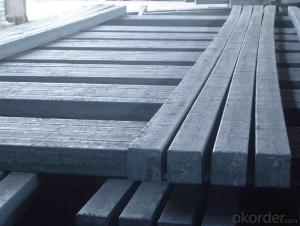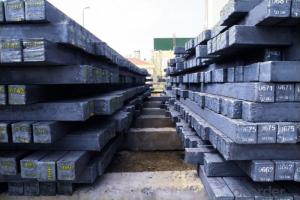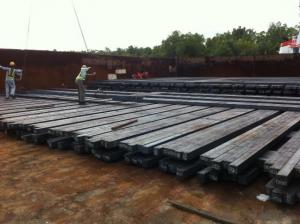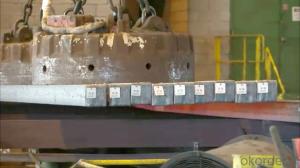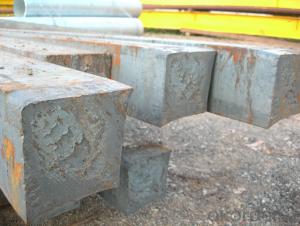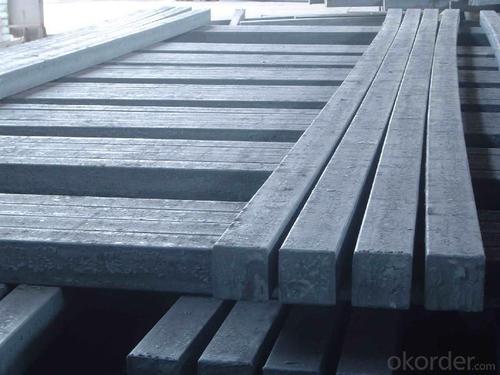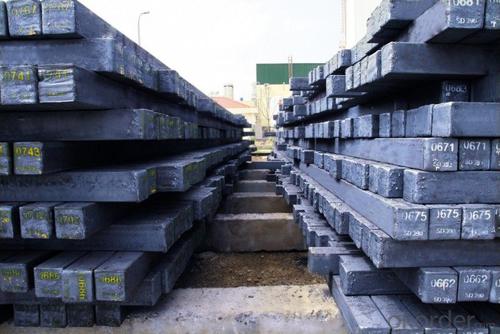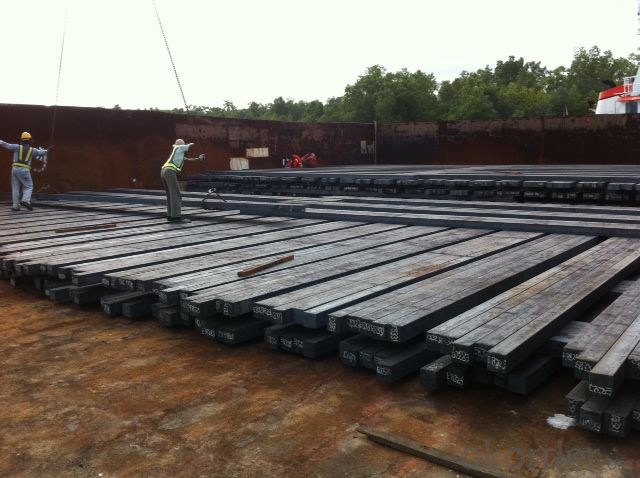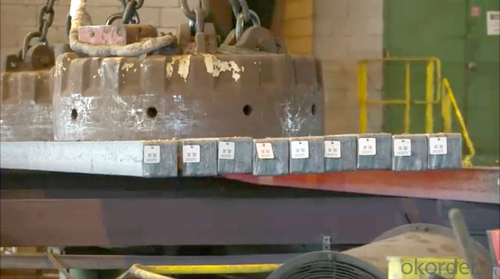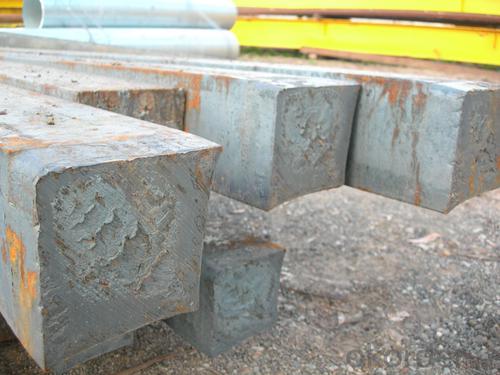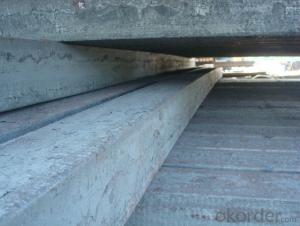Prime quality square alloy steel billet 155mm Q235
- Loading Port:
- Tianjin
- Payment Terms:
- TT OR LC
- Min Order Qty:
- 100 m.t.
- Supply Capability:
- 10000 m.t./month
OKorder Service Pledge
OKorder Financial Service
You Might Also Like
Structure of Prime quality square alloy steel billet 155mm Q235
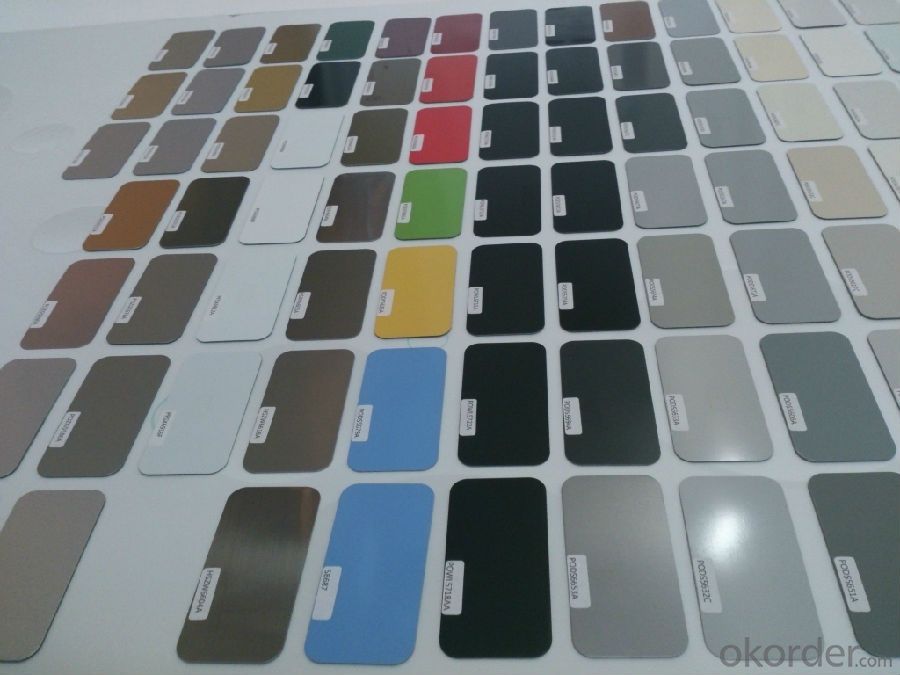
Description of Prime quality square alloy steel billet 155mm Q235
1. Prepainted steel coil is coated with organic layer, which provides higher anti-corrosion property and a longer lifespan than that of galvanized or galvalume steel sheets.
2. The base metals for prepainted steel coil consist of cold rolled, HDGI Steel, electro-galvanized and hot-dip alu-zinc coated steel. The finish coats of prepainted steel coil can be classified into groups as follows: polyester, silicon modified polyesters, polyvinylidene fluoride, high-durability polyester, etc.
3. The production process has evolved from one-coating-and-one-baking to double-coating-and-double-baking, and even three-coating-and-three-baking.
4. The color of the prepainted steel coil has a very wide selection, like orange, cream-colored, dark sky blue, sea blue, bright red, brick red, ivory white, porcelain blue, etc.
5. The prepainted steel coils can also be classified into groups by their surface textures, namely regular prepainted sheets, embossed sheets and printed sheets.
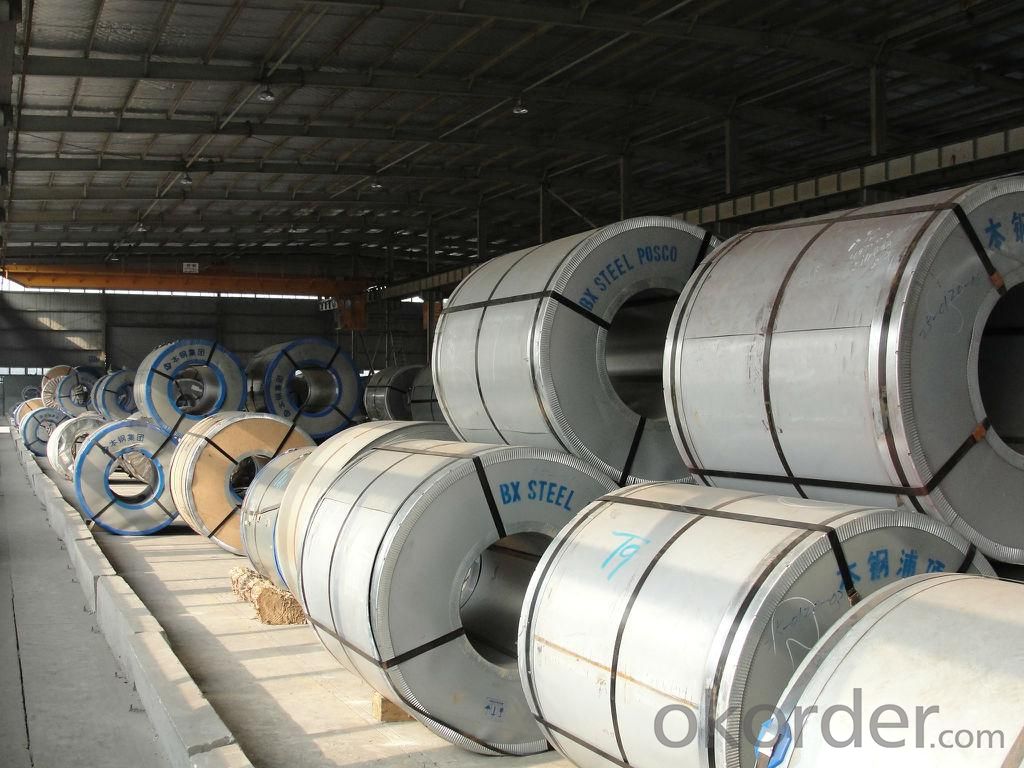
Main Feature of Prime quality square alloy steel billet 155mm Q235
Uncoated CR steel sheet
With the features of in line with the international highest standards in demension and shape, excellent surface finish and properties, the products are mainly used in home appliance and automobile industries.
Galvanized steel sheet(include HDG and EG)
With the features of good corrosion resistance, the products are mainly used in automobile, home appliance, electronics, building and machinery manufacture industries, etc.
Precoated steel sheet
With the features of enviromental protection and good processablility, long lasting surface durability, rich in colors, the products are maily used in building, home appliance and furniture industries, etc.
Applications of Prime quality square alloy steel billet 155mm Q235
Construction
Manufacture anticorrosion, industrial and civil architecture roof boarding, roof grille
Light industries
Home appliance's case, civil chimney, kitchen utensils
Auto industry
Corrosion resistant parts of cars
Agriculture
Food storage, meat and aquatic products' freezing and processing equipment
Commerce
Equipments to store and transport materials, and packing implements
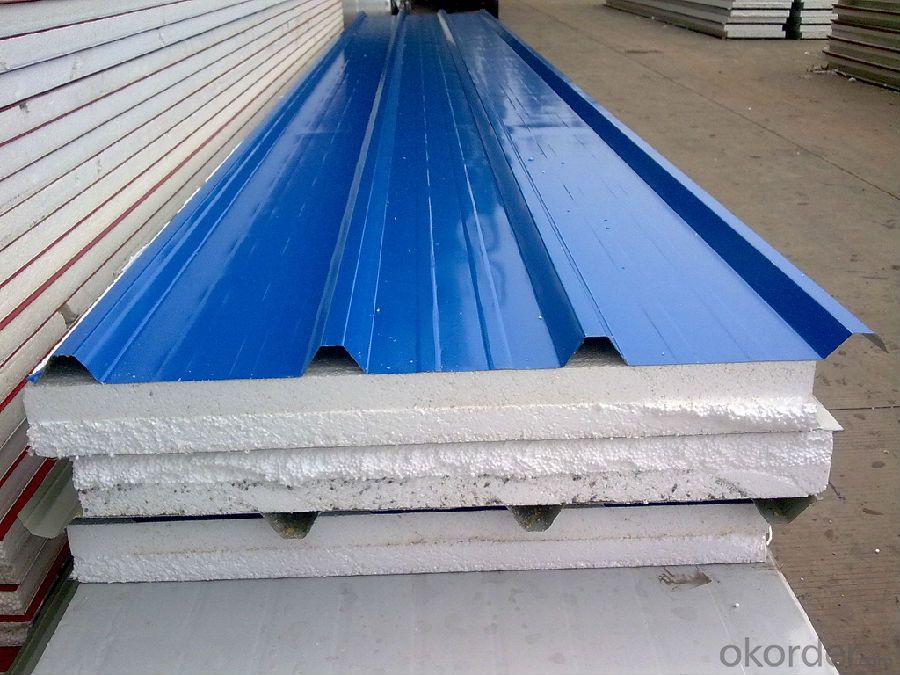
Specifications of Prime quality square alloy steel billet 155mm Q235
Product | Prime quality square alloy steel billet 155mm Q235 |
Material Grade | SGCC / SGCH / DX51D+AZ, etc |
Thickness | 0.6-3.0mm |
Width | 500-1500mm |
Tolerance | Thickness: +/-0.02mm , Width:+/-2mm |
Zinc-coating | Z30-150g/m2 |
Technique | Raw material: Hot rolled steel coil --> Cold rolled_>hot dipped galvalume |
Surface | Dried, Chromated, Unoiled |
Spangle | Regular spangle , small spangle, zero spangle |
ID | 508MM 610MM |
Coil weight | 1-25MT |
Export package | Cardboard inner sleeves, Waterproof paper, galvanized steel covered and steel strip packed |
FAQ of Prime quality square alloy steel billet 155mm Q235
We have organized several common questions for our clients,may help you sincerely:
1. How Can I Visit There?
Our company is located in Tianjin City, China, near Beijing. You can fly to Tianjin Airport Directly. All our clients, from home or aboard, are warmly welcome to visit us!
2. How Can I Get Some Sample?
We are honored to offer you sample.
3. Why choose CNBM?
Our delivery time about 15-20days for standard sizes, if you have other requirements like hardness, quanity and width ,it is about 20-40days. But don't worry we also try our best for the delivery time ,because time longer and our cost is higher.
- Q: How are steel billets different from steel ingots?
- Steel billets and steel ingots are both semi-finished steel products, but they differ in terms of their shape, size, and manufacturing process. Firstly, the shape of steel billets and steel ingots is different. Steel billets are typically square or rectangular in shape, with specific dimensions that are determined by the production requirements. On the other hand, steel ingots have a more irregular shape, often resembling a large block or loaf. The shape of the ingot is determined by the mold in which it is cast. Secondly, the size of steel billets and steel ingots also varies. Steel billets are generally smaller in size compared to ingots. Billets are typically produced in smaller cross-sectional areas and lengths, making them more suitable for further processing. Steel ingots, on the other hand, are larger and heavier, as they are cast in molds that can accommodate a greater volume of molten steel. Lastly, the manufacturing process for steel billets and steel ingots differs. Steel billets are typically produced through a process called continuous casting, where molten steel is poured into a water-cooled mold to solidify into the desired shape. This process allows for a more controlled and efficient production of billets. On the other hand, steel ingots are generally produced through casting in open or closed molds, where the molten steel is poured and left to solidify. This process is often slower and less precise compared to continuous casting. In summary, steel billets and steel ingots differ in terms of their shape, size, and manufacturing process. Billets are square or rectangular in shape, smaller in size, and produced through continuous casting, while ingots have an irregular shape, larger in size, and produced through casting in molds. Both products serve as essential raw materials for the production of various steel products.
- Q: How are steel billets used in the manufacturing of agricultural equipment?
- Steel billets are used in the manufacturing of agricultural equipment by being forged or rolled into various components such as frames, axles, and blades. These billets provide the necessary strength and durability required to withstand the demanding conditions and heavy-duty applications in farming and agriculture.
- Q: What are the different surface treatments for improved wear resistance in steel billets?
- There are several surface treatments that can be applied to steel billets to enhance their wear resistance. Some common methods include carburizing, nitriding, and hard chrome plating. Carburizing involves introducing carbon into the surface of the billet through a heating process, creating a hardened layer. Nitriding, on the other hand, involves introducing nitrogen into the surface to form a hard nitride layer. Hard chrome plating is another option where a layer of chromium is electroplated onto the surface, providing excellent wear resistance. These treatments can significantly improve the durability and performance of steel billets in various applications.
- Q: What are the potential applications of steel billets in the aerospace industry?
- Steel billets have several potential applications in the aerospace industry. They can be used for the manufacturing of various components such as engine parts, landing gear components, and structural elements. The high strength and durability of steel billets make them suitable for ensuring the structural integrity and safety of aircraft. Additionally, their excellent heat resistance properties make them ideal for applications in the aerospace industry where high temperatures are encountered, such as in jet engines.
- Q: How often is it? What is the range of temperature in the process of rolling? What is the temperature of the final rolling?
- Cold rolling is not consideredThe temperature at which the billet begins to roll (surface) is generally 1000-1150 degrees
- Q: What are the main factors affecting the ductility of steel billets?
- There are several main factors that affect the ductility of steel billets. Firstly, one of the most significant factors is the carbon content in the steel. Higher carbon content generally reduces ductility and makes the steel more brittle. This is because carbon atoms tend to form strong bonds with iron atoms, resulting in a harder and less malleable material. Secondly, the composition of other alloying elements in the steel can also influence ductility. Elements such as manganese, silicon, and phosphorus can have different effects on the steel's ductility depending on their concentration. For example, manganese can enhance ductility while phosphorus can decrease it. Thirdly, the heat treatment process can have a significant impact on the ductility of steel billets. Rapid cooling, known as quenching, can increase the strength of the steel but may also reduce its ductility. On the other hand, annealing, which involves heating the steel and then slowly cooling it, can improve the ductility of the material. Additionally, the presence of impurities and defects in the steel can affect its ductility. Inclusions, such as non-metallic particles, can act as stress concentrators and reduce the material's ability to deform plastically. Similarly, cracks, voids, and other defects can also weaken the steel and decrease its ductility. Lastly, the grain size of the steel can influence its ductility. Fine-grained steels tend to have higher ductility compared to coarse-grained ones. This is because smaller grain boundaries provide more obstacles for dislocation movement, leading to increased resistance to deformation. Overall, the ductility of steel billets is influenced by various factors, including carbon content, alloying elements, heat treatment, impurities and defects, and grain size. Understanding and controlling these factors is essential for ensuring the desired ductility properties of steel.
- Q: What are the different types of steel billet forming processes?
- The different types of steel billet forming processes include hot rolling, cold rolling, extrusion, forging, and casting.
- Q: What are the different surface finishes available for alloy steel billets?
- There are several different surface finishes available for alloy steel billets, depending on the specific requirements and applications. Some of the common surface finishes include: 1. Hot rolled: This is the most common surface finish for alloy steel billets. It is achieved by rolling the steel billet at a high temperature, which results in a rough and scaled surface. 2. Cold drawn: This surface finish is achieved by pulling the steel billet through a die at room temperature. It provides a smooth and polished surface, with improved dimensional accuracy and surface quality. 3. Peeled: In this process, a layer of material is removed from the surface of the steel billet using a peeling tool. It results in a smooth and shiny surface finish, with improved surface quality and dimensional accuracy. 4. Ground: This surface finish is achieved by grinding the surface of the steel billet using abrasive wheels or belts. It provides a smooth and uniform surface finish, with improved surface quality and dimensional accuracy. 5. Turned: In this process, the steel billet is rotated against a cutting tool, which removes material from the surface and creates a smooth and polished finish. It is commonly used for high precision applications where a smooth surface finish is required. 6. Polished: This surface finish is achieved by polishing the steel billet using abrasive compounds and buffing wheels. It provides a mirror-like finish, with improved aesthetic appeal and corrosion resistance. It is important to select the appropriate surface finish based on the specific requirements of the application, such as dimensional accuracy, surface quality, aesthetic appeal, and corrosion resistance.
- Q: What is the role of steel billets in the manufacturing of automotive transmission systems?
- Steel billets play a crucial role in the manufacturing of automotive transmission systems as they are the starting material for forging various components such as gears, shafts, and other critical parts. The billets are heated and then shaped through the forging process to achieve the desired dimensions and strength required for these transmission components. The use of steel billets ensures the durability, reliability, and overall performance of automotive transmission systems in vehicles.
- Q: How are steel billets transported?
- Steel billets are typically transported using various modes of transportation, depending on the distance and infrastructure availability. One common method is by using trucks or lorries, especially for shorter distances or when the delivery location is not easily accessible by other means. The steel billets are loaded onto flatbed trucks or in containers and securely strapped down to ensure they don't move during transit. For longer distances or when transporting large quantities of steel billets, railways are often utilized. Rail transport allows for the movement of heavy loads and offers a more cost-effective option compared to other modes of transportation. Steel billets are loaded onto specialized railcars, either open-top or covered, and secured properly to prevent any damage or displacement during the journey. In some cases, especially for overseas shipments or when transporting to areas without rail access, steel billets may be transported via sea freight. They are typically loaded into shipping containers and then onto cargo vessels. This method is suitable for large quantities of steel billets, and it offers the advantage of being able to transport them to any part of the world. Regardless of the mode of transportation, it is crucial to handle steel billets with care and ensure proper securing to avoid shifting or damage during transit. Additionally, the use of specialized equipment and vehicles, such as cranes or forklifts, may be required at both the loading and unloading points to safely handle and transfer the steel billets.
Send your message to us
Prime quality square alloy steel billet 155mm Q235
- Loading Port:
- Tianjin
- Payment Terms:
- TT OR LC
- Min Order Qty:
- 100 m.t.
- Supply Capability:
- 10000 m.t./month
OKorder Service Pledge
OKorder Financial Service
Similar products
Hot products
Hot Searches
Related keywords
